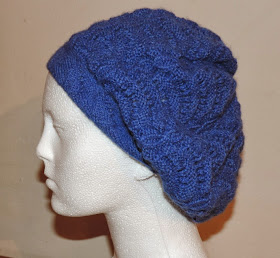The Girl's Own Paper was edited by Flora Klickmann, a prolific and successful author as well as editor. You would expect that she would be sympathetic to women who wanted to be financially independent and self-supporting, with their own careers, because she was herself, and there are some signs of that. For instance, there is an article on "Quick Steps in Cooking - Suggestions for the Business Woman who has to look after Herself". The recipes in it are designed to minimise washing up - "one of the chief problems of the worker. Only those who have tried the experiment of doing everything for themselves, and earning their living besides, realise the strict economy of plates and spoons and forks and pans which must be maintained if life is not to become an impossible burden." (Odd that doing your own washing up, etc., is viewed as an experiment, rather than something you had to do because you couldn't afford to employ someone.) The article is aimed at both business women who have a "daily servant for a few hours daily" and also those who attend to themselves entirely. In either case a meal that doesn't require a lot of attention is needed, so soups and stews are suggested, and risotto - though I have to say that the risotto recipe is not at all authentic. (You cook the rice by "furious boiling" and then add other ingredients afterwards.)
Some of the ads in the magazine also seem to be aimed at women who did not have servants - or just possibly who were servants themselves, though 6d for a monthly magazine seems a bit steep for the sort of lowly servant who would have to blacklead all the grates.
But elsewhere, the magazine is aiming at women who don't want to be independent. One article begins, "Women are said to be the keepers of men. This being true, it is good to know that there are many women who seem born to the purple of wifehood and motherhood, and they seem to find in the seclusion of their own homes, and by their own firesides, a fuller and more satisfying life than anything the outside world has to offer them. The need of this world to-day is not for professional women, but for educated, intelligent and conscientious women as home-makers. The world would wag along very comfortably if there never were another woman lecturer or doctor, for all those places would be filled very creditably by men; but it takes a woman to make a home, and the home is the one thing needful for the safeguarding of humanity."
Not altogether consistent, for elsewhere in the same issue an article discusses how difficult it is to find good servants - being a middle-class home-maker wasn't just a matter of comfortable seclusion by your own fireside, but of managing staff, who were then liable to do inconvenient things like leaving to get married.
As usual in women's magazines, there are features on clothes. In 1914, they were very constraining (on a foundation of corsets, of course) - the silhouette was very narrow, so that if you were really fashionable, it was hard to take more than small steps. There are several pages of illustrations of garments that you could make yourself - paper patterns for dresses, underwear, children's clothes, etc. could be bought from the magazine. Ready-made clothes are advertised, too.
And you had to wear a hat. To be fashionable, it had to be large and highly decorated - but if you were short of money you could refurbish an old hat by dyeing it.
Other ads are for sports clothes, which were considerably freer. Sometimes, a woman is posed in a long narrow skirt holding a golf club and you wonder how anyone could possibly play golf dressed like that. But the Tootal's tennis dress shows that at least sometimes women's dress could allow a lot more movement.
The long cardigan and not-too-tight skirt shown in other ads for "sports" clothes were I think what many women wore every day - they were not just for sports. As the Pryce-Jones ad says "No lady's wardrobe can be considered complete without one of these delightful models, which are so very inexpensive."
 |
| Ad for Pryce-Jones, Newtown, Wales |





























.jpg)